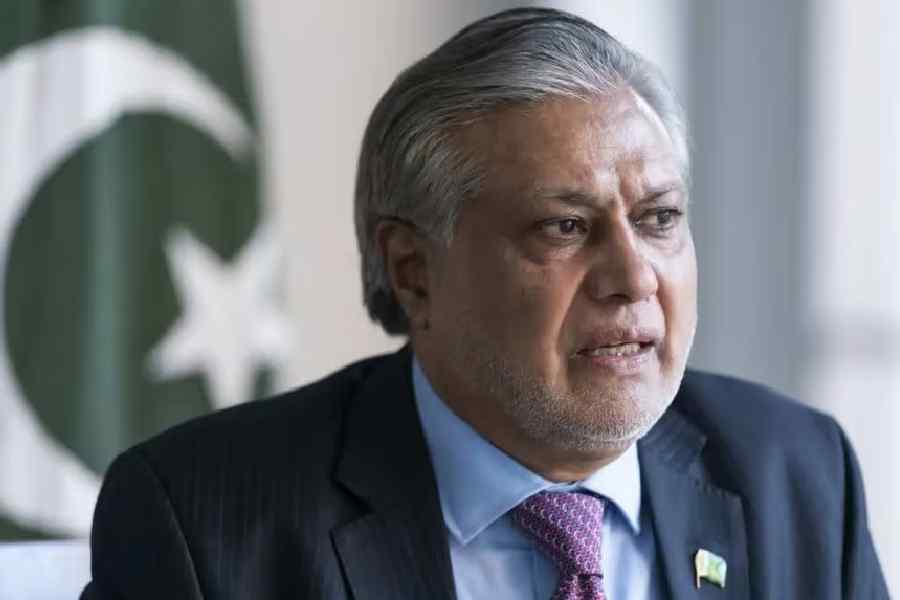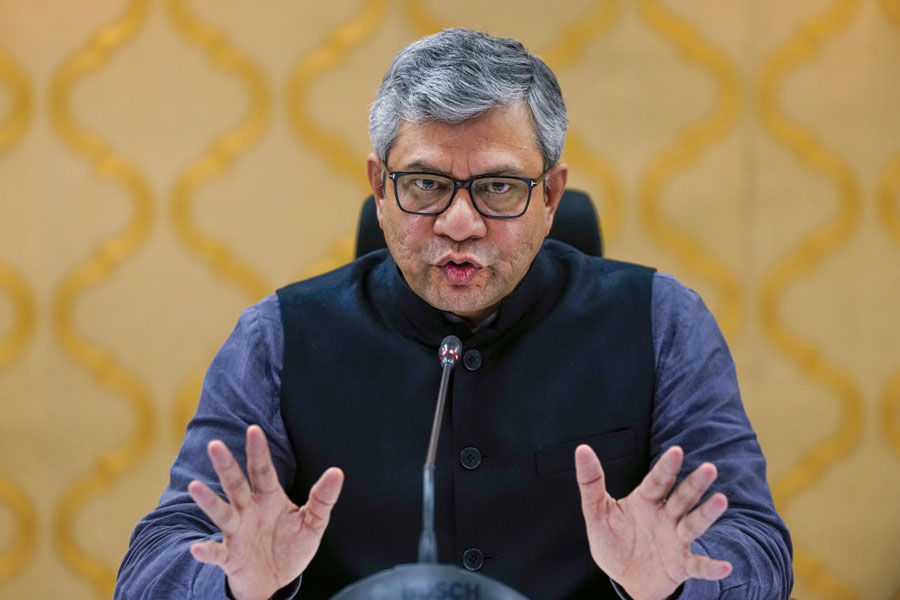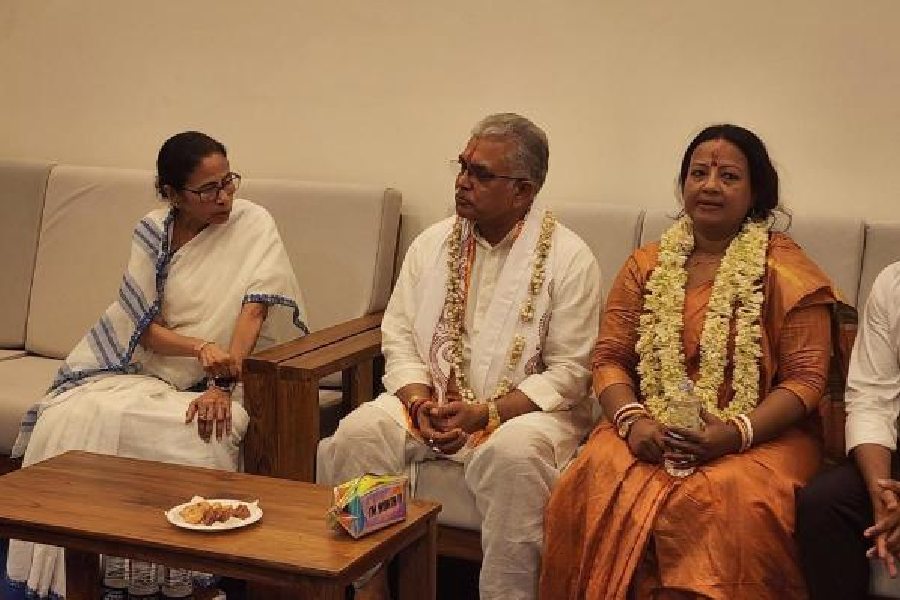 |
 |
 |
| (From top) At Ivory, chef Debojyoti Sarkar likes to dabble in the cuisines of places like Turkey, Hawaii and Hungary |
The New World has come a-knocking. With menus from the world over bringing a scintillating array of bold flavours, from fast food to haute cuisine. We’re talking an array of different tastes. So there are Peruvian and Brazilian dishes from South America, exotic Turkish meals from the Med belt and Southeast Asian fare in the form of Laotian and Vietnamese and Cambodian food. From Africa, we have the Moroccan and Tunisian. And finally some Caribbean treats featuring the very individual cuisines of Cuba, Trinidad & Tobago, Jamaica and Barbados.
In fact, Indian diners now have the world literally on their plate. They can be like the famous Florida chef Norman Van Aken — one of the pioneers of the term “New World Cuisine.” He says that if he had a “map of the world as a tablecloth” and “could choose a place at that table,” he would “sit at the southern tip of Florida, at the nexus of North America and the Caribbean” and then let his “plate touch Cuba, the Florida Keys, the Yucatan, the West Indies, the Bahamas and South America.”
First let’s step into Wildfire. Not the forest burning kinds — more on the lines of a churrascaria (that’s actually a Brazilian barbecue restaurant). Inside the Crowne Plaza Hotel in the Delhi suburbs, you can find this restaurant with its decor of fiery reds and rustic wood. It’s open only for dinner — at a time when the place comes alive with flames thrown up by huge black pots and where you encounter two young Brazilian chefs in their early twenties who tend the open grill kitchen. Both Michel Frandoloso and Mateus Finato came to the city from the churrascarias of Sao Paolo two years ago wielding knives and skewers to slice sizzling hot, charcoal-cooked meat onto the plates of foodies.
 |
| Chef Mateus Finato’s forte is grilling meat and carving it off a skewer onto the guest’s plate at Wildfire in Delhi |
Their unique culinary art? They hardly use spices. “Our speciality is the churrasco or grilled meat, which is marinated so that the taste is not overpowered by spices,” says Finato. Herbs are more in favour with them and that’s why you’ll find the kitchen counter lined with ceramic pots overflowing with thyme, basil and marjoram plants.
Keeping in mind the adventurous palates of Bengalis, the fine dining restaurant of Ivory on Camac Street in Calcutta launched exotic food fests some two years ago. The idea was to bring in the regional and varied cuisines of places like Hungary, Cuba, Hawaii and Turkey — countries whose culinary traditions are still to be discovered by many.
 |
 |
| The Moroccan Tajine (above) is a favourite at Rajneesh Malik’s eatery Fez. He also offers Turkish fare along with other cuisines from the Mediterranean belt |
Some Indonesian and Burmese dishes are also being served up at Ivory. As Nitin Kohli, director, Ivory, puts it: “The trend of eating ‘fresh’ and natural food is fuelling the demand for Southeast Asian leafy greens, herbs and preparation techniques such as stir-frying, braising, grilling and steaming.”
Meanwhile at Indochine’s Forbidden City, a restaurant of Singaporean origin in Delhi, you’re tempted to try a medley of authentic Southeast Asian food from Laos, Vietnam and Cambodia that’s quite distinct from the usual Thai and Chinese fare.
And what seems to be a clear hit with local taste buds is Arab-African cuisine coming from Morocco, Tunisia, Turkey and even Israel. At the exclusive Olive Beach in Delhi, for instance, owner A.D. Singh in consultation with his chefs has introduced a Moroccan Alchemy night every Thursday in association with the Moroccan embassy. Accordingly, chef Guiliano Tassinari offers mumulay (that’s stuffed potato fritters to you and me), harissa spiced lamb chops and chermoula marinated tuna kababs with couscous.
But Olive Beach, which has always been known for its signature ambience, is a lot more than food and drink. The highlights also include fun evenings of arts and crafts, music, movies and travelogues from the region together with its inventive decor — white pebbled gardens, mosaic lamps, pink fairy lights and coloured cushions that are complemented by a profusion of mirrors and glass chandeliers.
 |
 |
| Dishes like the sizzling black pepper lamb with garlic and butter (above) and the Vietnamese chilli prawns at Indochine’s Forbidden City come from Southeast Asian countries like Laos, Vietnam and Cambodia |
You can find the North African touch at Olive in south Mumbai — the one at the far end of the race course in Mahalaxmi where you can peer out through the small Moorish-style windows to catch a glimpse of well-groomed horses. Chef Max Ortelli serves up a largely Mediterranean menu but you’ll also find dishes like the delectable Mechouia Salad tossed up with grilled sweet peppers, tomatoes, garlic and onions mixed with lemon, tuna fish and hard-boiled eggs, brik which is a fried pastry filled with egg — the chef proudly refers to it as “the Tunisian dosa” — and skewered meats cooked over the tabouna, a clay-domed oven, in Tunisian style.
“The fast movers are the skewered meats and fish. Since the fish is very fresh, skewered it’s even better. It approximates the experience of having sushi due to the hint of rawness in it,” notes Ortelli, who’s spent time in Tunisia managing his own hotel establishment. In fact, Ortelli’s wife is Tunisian.
In a more conventional set-up in Calcutta, Soho, the “lifestyle kitchen bar” goes a la carte with the Turkish Adana kababs and Moroccan soups to spice up its extensive Mediterranean fare.
 |
 |
| Chef Max Ortelli serves skewered meat and a flaky brik (above), the Tunisian way, at Olive in Mumbai |
If the New World is a hit with the fine dining restaurants, so is it with the country’s casual eateries and cafes. In fact, at times, the owners themselves lend authenticity to the place. Like Trinidadian Sue R. John who sizzles, simmers and stirs home-style food in a small eatery in Bangalore. Sue’s Food Place is an unpretentious outlet designed by its owner to give the feel of a typical West Indian home. “No banana leaves flying out in all directions though or coconut leaves hanging down,” she warns with a smile.
The buffets on Sundays are a very pocket-friendly Rs 600 for two. “The influence is a mix of the places I’ve lived and worked in — Trinidad & Tobago, Jamaica and Barbados,” says Sue, harking back to the migrant food culture in Trinidad that has African slave, Spanish, French and Indian touches to its cuisine.
If some international cuisines in the past have arrived the fast food way — for example Italian came the pizza route —the Peruvian experience is coming in through a burger joint chain from Peru called Bembos. At present, you can try out its low calorie, grilled burgers at outlets in Bombay and Delhi.
On any given day, if you happen to be strolling into the tony Select City Mall in south Delhi that boasts all kinds of fancy brands, you’ll come across a small Turkish café Ala Turka. The way it sells out every evening, despite not being cheap, is a clear sign of the fact that it’s a hit with the crowd. In Calcutta, similarly it’s Aqua Java with its Café Istanbul outlet which does brisk business, with Turkish street food. “I brought into the menu dishes like Kumpir, baked potato with a variety of really tasty fillings, that I came across on the streets during my Turkey visits,” says Saket Agarwal, managing director of Aqua Java.
In another part of Delhi, in the quiet vicinity of the embassies is the chic eatery of Rajneesh Malik called Fez. There is a fantastic range of Moroccan and Turkish dishes such as the Tajine and the Balicplaki (filler of river sole baked with root veggies and served with zattar rice or pita bread).
 |
| Sue offers Caribbean fare cooked with ingredients like the pungent Scotch Bonnet and the Trinidadian anchar masala at her eatery in Bangalore; Pix by Gopal Krishna |
Ever wondered how authentic are these regional cuisines that are served up in the heart of your town? Rest assured that most of them are importing ingredients to keep things bona fide. So at Wildfire, when you are paying a set price of Rs 2, 350 excluding taxes for one, remember this: You’re paying for authenticity. That means succulent cuts of Brazilian beef, French duck, German pork and New Zealand lamb. At Fez, Malik imports ingredients like the Sumac powder from Dubai.
Sue too wants her guests to have the food that she grew up eating so she gets most of her masalas all the way from Jamaica. “There’s the jerk seasoning which is crucial to cooking jerked chicken and the Scotch Bonnet — that pungent chilli native to the Caribbean — as well as the Trinidadian anchar masala and a herb called Shadow Beni.
But there are watered-down versions too. While Kohli of Ivory says people are seeking authentic cuisine that tastes great — you do get a mean Grandpa’s Hungarian Goulash and the Hawaiian Huli Huli Chicken here — he also notes that sometimes one can’t leave the customer feeling like a fish out of sea with foreign flavours.
Olive’s Ortelli says that one of his best-loved dishes of lamb shanks had to be taken off the menu at the restaurant as it didn’t find favour with customers. At Aqua Java too, the Elma chai and bitter coffee typical to Turkey never were a success from the word go. Meanwhile at Bembos, they’ve put rajma burgers and chana burgers on the counter to offer the comfort of spiced-up veggies in a bun.
But for the most part, they say, people are looking for culinary adventure. And the good news now is that if you want to give your palate an international treat, you don’t have to book a plane ticket — you can just make a reservation at a local eatery!










